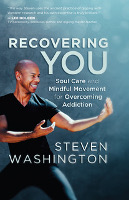
Image by Gerd Altmann
Without a doubt, it takes courage to face our fears, to be willing to look beneath the surface and examine what we normally avoid. When we do, we shine a light into the darkness and truly see what’s there. Change alone can incite fear. So, to improve our self-care and to succeed at recovery, we need to examine any resistance or negative responses to recognize and acknowledge the fears beneath them.
Sometimes people believe that their fears are unique or that no one else could possibly understand exactly why they are afraid. Truthfully, we are all afraid of something. It does not matter who we are. No one gets through this life without traversing the complicated road of fear. Everyone has the responsibility of managing their emotions, either with or without prowess.
It can be helpful to hear others speak about their fears. Doing so allows us to identify with and acknowledge our shared humanity and struggles. Sharing fears is a window of opportunity that helps us move past our perceptions about someone’s inner life just by looking at their external circumstances. We get a chance to see that we are all afraid of the same stuff.
Here are some tools that can help you develop a sense of freedom, courage, and more self-love. Use them anytime you struggle with fear to help you along your path.
Be Curious: Walk Through Your Fears
A valuable tool I’ve learned is to be curious about the things that frighten me. I find it is beneficial to “unpack” my fears, one by one, when they arise. In early recovery, when I felt triggered or fearful, I was advised to “play the tape” through to the end. That is, I was encouraged to walk myself through my worst-case scenario and imagine what might happen if my fears became a reality.
As an example, I’ll unpack one of my fears from my list: my fear of abandonment. This fear has been with me most of my life, and it probably stems from growing up in a broken home. Today, when something triggers that fear — when I become afraid or anxious that someone I care about will leave me — whispers of that old wound surface and inform my reaction. Some small part of me believes I will be alone similar to how I felt abandoned as a child. And hidden within this fear is a deeper fear that, if this person leaves, I will be unable to care for myself and maybe even unable to survive.
So what would happen if this person left? As I unpack this worst-case scenario, and I search my life for evidence of my inability to take care of myself, connect with others, and move forward, I can honestly find no evidence of that. The fear is just fear; it’s unrealistic, and even a lie. Recognizing this gives me a new perspective and changes my relationship to whatever I was afraid of moments earlier.
Take a moment now to think of a fear you have. See this fear in its fullness in your mind. Then become curious. Unpack this fear and search for its origins. Try to remember how long you’ve had this feeling. Was this someone else’s fear, and at some point, you chose to adopt it yourself? Is there a part of you that believes that you would be incapable of navigating life if your fear became a reality? Challenge this perception. Would you really let this happen?
Recall other times when you displayed your resiliency and inner strength, when you overcame something similar to what you are afraid of. Search for evidence of your power. It is there.
Check In with Your Breath
Something very interesting happens when we are struck by fear. We often think of fear as an emotion, but it is a physical reaction as well. This is what the fight, flight, or freeze response refers to. When a frightening or stressful experience occurs, the adrenal glands, which are located on top of both kidneys, produce adrenaline and cortisol hormones. The release of these hormones creates a series of physical responses, which include:
increased heart rate,
faster breathing or shortness of breath,
butterflies or digestive changes,
sweating and chills, and
trembling muscles.
Of all these physical responses, the breath is the doorway into understanding what’s happening in the moment. We can also shift our physical response to fear by using the breath, and if we can calm our physical response, then the emotions usually calm as well. We can always tell a great deal about how we’re feeling by paying attention to our breathing.
Whenever you notice that your breathing is short and choppy, you’re probably experiencing a stress response. But if you deliberately calm your breath, you can release that stress. Try it now.
Recall a fear and let yourself really experience it in your body. Now begin to breathe with awareness. Place your hands on your belly and breathe deeply and slowly, inhaling through the nose and exhaling through your mouth. Breathe this way ten times, and then notice how you feel.
Breathing in this way helps to relax the body, soothe the emotions, and calm the mind. This puts you in a better position to react appropriately in the moment.
Share Your Fears with Another
Within my first week of recovery, someone told me that a problem shared is a problem halved. Keeping your concerns and fears to yourself won’t serve you in the end. The act of saying out loud to another human being exactly what you are worried about has the power to dismantle that all-consuming emotion.
It takes courage to say to someone else, “I am afraid of …” But the act of doing it will shift your perspective. Sometimes, even a tiny shift is enough to lighten our load and ease the burden of carrying our fears alone. We receive a gift by being heard, but we also give a gift when we share a deep part of ourselves with another.
Identify one or two people you trust; make sure to choose someone you know has your best interests at heart. Make a plan to share with them one or more of the fears you have. Ask them if you can call, write, or meet and have an honest talk. Trust in the knowledge that this special person or persons won’t judge you for expressing your vulnerabilities.
Copyright ©2022. All Rights Reserved.
Printed with permission from New World Library.
Article Source:
BOOK: Recovering You
Recovering You: Soul Care and Mindful Movement for Overcoming Addiction
by Steven Washington Steven Washington shares his story of growing up around alcoholism and going into recovery for his own drug and alcohol addiction. But the heart and soul of this book is his process of guiding readers through fear, shame, and regret and into community and gratitude. Self-massage, breathing, meditation, and, uniquely, a focus on qigong — the ancient movement practice at the heart of Chinese medicine and Taoist philosophy — liberate, energize, and soothe.
Steven Washington shares his story of growing up around alcoholism and going into recovery for his own drug and alcohol addiction. But the heart and soul of this book is his process of guiding readers through fear, shame, and regret and into community and gratitude. Self-massage, breathing, meditation, and, uniquely, a focus on qigong — the ancient movement practice at the heart of Chinese medicine and Taoist philosophy — liberate, energize, and soothe.
For more info and/or to order this book, click here. Also available as an Audiobook and as a Kindle edition.
About the Author
 Steven Washington is the author of Recovering You: Soul Care and Mindful Movement for Overcoming Addiction. As a former professional dancer who performed on Broadway in Disney’s The Lion King, his love of movement inspired him to become the highly acclaimed Qigong and Pilates teacher that he is today.
Steven Washington is the author of Recovering You: Soul Care and Mindful Movement for Overcoming Addiction. As a former professional dancer who performed on Broadway in Disney’s The Lion King, his love of movement inspired him to become the highly acclaimed Qigong and Pilates teacher that he is today.
Steven lives a joyful life of recovery and is passionate about helping others as they navigate towards health and happiness. He offers Qigong, Pilates, Dance, Meditation, Laughter, and more through his website. Visit him online at StevenWashingtonExperience.com




























